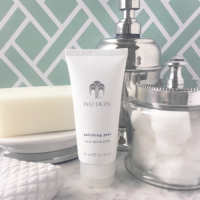Safeguarding Your Skin Against Pollution
March 14, 2018

Concerns with air quality and pollution are growing in our more industrialized world. While this used to be an issue primarily focused in urban areas, poor air quality has grown to be a global concern (1). As such, anti-pollution claims in personal care products are also growing. Read on to learn the importance of incorporating these products into your skin care routine!
How Air Pollution Effects Your Skin
Air pollution can indeed impact skin. Just as skin is varied, its response to air quality is varied. For some, exposure to certain environmental factors can cause skin to become dry and dull, yet others may experience discoloration and uneven skin tone, wrinkles, and/or fine lines. Some may experience oily skin, acne and/or sensitive skin (2).
Combatting Pollution With LumiSpa
Nu Skin has some products within its portfolio that may not be positioned for concerns with pollution, but they can still provide some of the benefits in protecting against its affects. The simplest way to combat pollution is to effectively remove it daily. Cleanser, exfoliators and masks have this mechanism of action. ageLOC LumiSpa (with its varied treatment cleansers for different skin types) is perfectly suited for this. LumiSpa not only effectively cleanses the skin, but also has an exfoliating effect. Its ability to move the skin allows the treatment cleansers to more provide a deep cleansing to the skin’s pores. The exfoliation (or removal of top skin cells) ensures the surface is clean, including particles that may be adhered to the surface.
Other Nu Skin Products for Pollution

Products with absorbent materials, like kaolin clay, bentonite clay, etc. are commonly used in anti-pollution products. (3). Polishing Peel contains bentonite clay. This product also exfoliates the skin.

Clay Pack contains kaolin clay to help absorb oils and debris from the skin. Both Clay Pak and Polishing Peel, with their absorbent clays, can help draw particulate matter from the skin and allow them to be rinsed away.

Tru Face Revealing Gel contains poly hydroxy acids including lactobionic acid. This ingredient is an antioxidant chelator (4). It can chelate metals which means it can increase the skin’s capacity to resist harm caused by heavy metals that accompany pollution.

ageLOC Tru Face Essence Ultra Uplifting Cream contains a blend of ingredients, kappaphycus alvarezii and caesalpinia spinosa extracts, that form a protective layer over the skin. This has been shown to decrease the adhesion of particulate matter to the skin after rinsing.
The great thing about these products is they can easily be combined into a skin care routine or if you are already enjoying a Nu Skin regimen, these can easily be added to it. There is no reason to feel as if you have to use all of these. Each will benefit your skin in your fight against the effects of pollution.
Written by:
K.C. Holley
Technical Communication & Education Manager
Nu Skin
Sources:
1. WHO (2010). Exposure to air pollution: A major public health concern found at http://www.who.int/ipcs/features/air_pollution.pdf?ua=1 on February 7, 2018.
2. Whitehouse, L. What’s the State of AntiPollution Skin Care? Part I found at https://www.cosmeticsdesign-europe.com/Article/2016/08/24/What-s-the-state-of-anti-pollution-skin-care-Part-I on February 7, 2018.
3. Williams, LB and Haydel, SE. Evaluation of the medicinal use of clay minerals as antibacterial agents. Int Geol Rev. Author manuscript; available in PMC 2011 Jul 1
4. Brouda I, Edison BL, Weinkauf RL, Green BA. Lactobionic Acid Anti-Aging mechanism: Antioxidant Activity, MMP Inhibition and Reduction of Melanogenesis found at https://vidweb.aws.marketlive.com/neostrata_vid/images/neostratapro/en_us/local/landing/lactobionic_acid_antiaging_mech.pdf February 7, 2018.
5. Draelos, ZD. Cosmetic Dermatology: Products and Procedures. Blackwell Publishing, Inc. 2010. p. 329
YOU MIGHT ALSO LIKE: